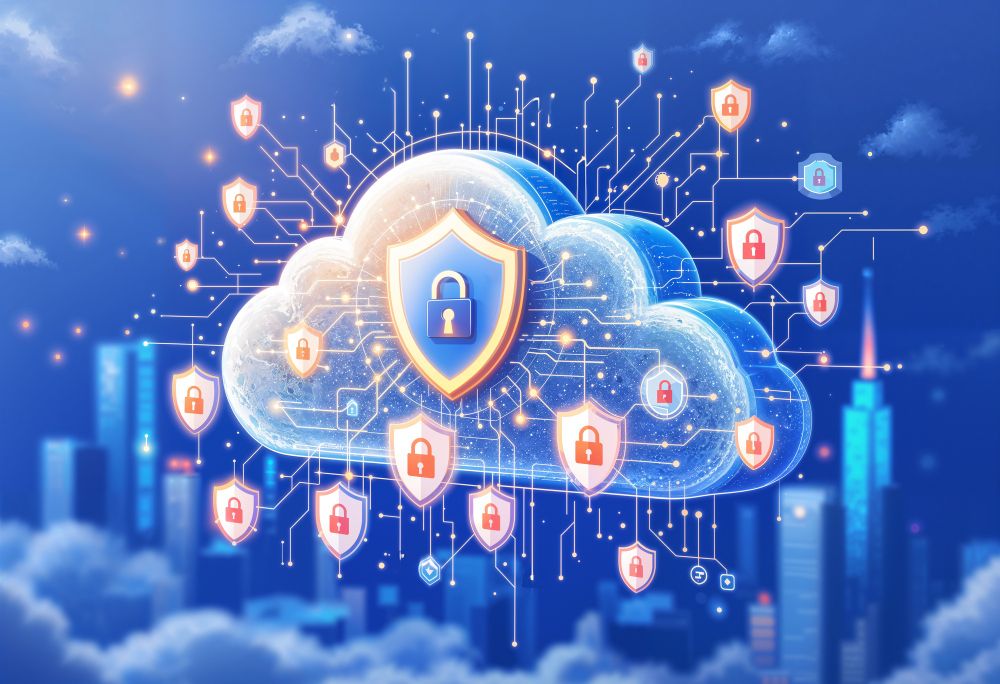Secure Cloud Practices with ISO 27001

Cloud computing offers flexibility and scalability, but it also introduces unique security challenges. ISO 27001 provides a framework for managing information security risks, and recent updates to ISO 27002 introduce new controls reflecting current practices, including information security for the use of cloud services【827214683515323†L165-L208】. This article explores secure cloud practices under ISO 27001 and offers guidance for organizations in the United States and Canada.
Understanding the ISO 27001 and ISO 27002 Updates
In 2022, ISO released an updated version of ISO 27002, restructuring the control set and adding 11 new controls【827214683515323†L165-L208】. Among these is Control 5.23 – Information security for the use of cloud services, which addresses the acquisition, usage and management of cloud services. The update emphasizes the need to evaluate cloud providers, manage access and ensure data protection.
Key Secure Cloud Practices
-
1.Risk assessment and provider selection – Conduct due diligence on cloud providers, assessing their security certifications, data residency and compliance with ISO 27001.
-
2.Access control and authentication – Implement multi‑factor authentication and least‑privilege access to reduce the risk of unauthorized access.
-
Data encryption – Encrypt data at rest and in transit to protect sensitive information from interception.
-
Backup and business continuity – Maintain backups and ensure disaster recovery plans cover cloud services.
-
Monitoring and logging – Continuously monitor cloud environments for suspicious activity and ensure logs are retained.
-
Compliance mapping – Map ISO 27001 controls to cloud-specific standards like ISO 27017 and ISO 27018 to ensure comprehensive coverage.
Benefits for US & Canadian Organizations
-
Regulatory compliance – Aligns with US privacy laws (e.g., HIPAA, CCPA) and Canadian regulations (PIPEDA). Ensuring data resides within appropriate jurisdictions reduces legal risk.
-
Data protection – Systematic risk assessment and control implementation protect sensitive data in cloud environments.
-
Customer trust – Demonstrating adherence to ISO 27001 and secure cloud practices enhances credibility with clients and partners.
-
Operational resilience – Proper backup and disaster recovery planning minimize downtime in the event of a breach or outage.
Benefits for US & Canadian Organizations
-
Regulatory compliance – The amendment requires organizations to consider climate change; aligning with national policies ensures compliance.
-
Risk management – Identifying climate risks reduces vulnerability to disruptions such as extreme weather events.
-
Stakeholder trust – Demonstrating commitment to climate action enhances reputation and meets investor expectations.
-
Competitive advantage – Proactive climate strategies can open opportunities in green markets and procurement.
Regional Considerations: US vs Canada
-
United States – Consider federal and state regulations on data privacy and industry-specific requirements (e.g., healthcare, finance). Evaluate whether cloud providers comply with the NIST Cybersecurity Framework.
-
Canada – Ensure compliance with PIPEDA and provincial privacy laws. Data residency requirements may dictate that data be stored within Canadian borders. The Canadian Centre for Cyber Security provides guidance on
Action Plan for Implementing Secure Cloud Practices
-
Evaluate cloud providers – Assess providers’ certifications (e.g., ISO 27001, SOC 2) and data residency options.
-
Update the Statement of Applicability (SoA) – Reflect the new ISO 27002 controls, including cloud services, and document control objectives【827214683515323†L165-L208】.
-
Implement technical controls – Deploy encryption, access controls and monitoring solutions tailored to cloud environments.
-
Develop policies and procedures – Define cloud usage policies, roles and responsibilities and incident response procedures.
-
Train employees – Educate staff on secure cloud usage, phishing awareness and data handling procedures.
-
Monitor and audit – Perform regular audits and continuous monitoring to ensure compliance and detect anomalies.
Frequently Asked Questions (FAQs)
What is ISO 27001’s role in cloud security?
It provides a framework for managing information security risks, including those related to cloud services.
What new control addresses cloud services?
ISO 27002:2022 introduces control 5.23 for information security in cloud services
Do I need ISO 27017?
ISO 27017 offers additional cloud‑specific guidance and can complement ISO 27001.
How do I assess a cloud provider?
Review certifications, security controls, compliance reports and data residency options.
How do we assess climate risks?
Use climate scenarios, hazard mapping and stakeholder consultations to identify risks and opportunities.
Should data always be encrypted?
Encrypt sensitive data at rest and in transit to ensure confidentiality.
What about shared responsibility?
Understand which security tasks are handled by the provider and which remain your responsibility.
Are cloud backups necessary?
Yes. Regular backups and disaster recovery plans protect against data loss.
How do we handle access control?
Use multi‑factor authentication and role‑based access control to minimize risk.
What metrics should we track?
Monitor incident response times, access logs and compliance audit results.
Can small businesses implement these practices?
Yes. Cloud providers often offer security features that can be configured based on ISO 27001 requirements.

Policy Pages
Copyright © 2025 Skillcompliance
